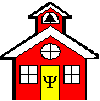Education and Human Sciences, College of

Department of Educational Psychology: Faculty Publications
Document Type
Article
Date of this Version
2018
Citation
Advances in Physical Education, 8, 46-57.
Abstract
This study examined peer group influence on university student drinking in China and the indirect effects of peer pressure and self-efficacy for alcohol self-regulation. A total of 951 undergraduate university students (first, second and third year) from a university in central China completed questionnaires asking about perceived peer pressures, self-efficacy for alcohol self-regulation, and drinking frequency. Analysis of their answers showed that the drinking frequency among physical education (PE) students was higher than among the comparison group (History students). The PE students perceived greater peer pressure, and had lower self-efficacy for alcohol self-regulation, both of which contributed directly to drinking frequency. Path analysis indicated indirect effects of peer pressure and self-efficacy for alcohol self-regulation on the association between peer group membership and drinking frequency. This suggested that skills training to increase self-efficacy for alcohol self-regulation in culturally-specific settings have the potential to both directly and indirectly lower drinking rates in peer groups with high peer pressure and higher than normal drinking.
Included in
Child Psychology Commons, Cognitive Psychology Commons, Developmental Psychology Commons, School Psychology Commons


Comments
Copyright © 2018 by authors and Scientific Research Publishing Inc.
Open access
https://doi.org/10.4236/ape.2018.81006